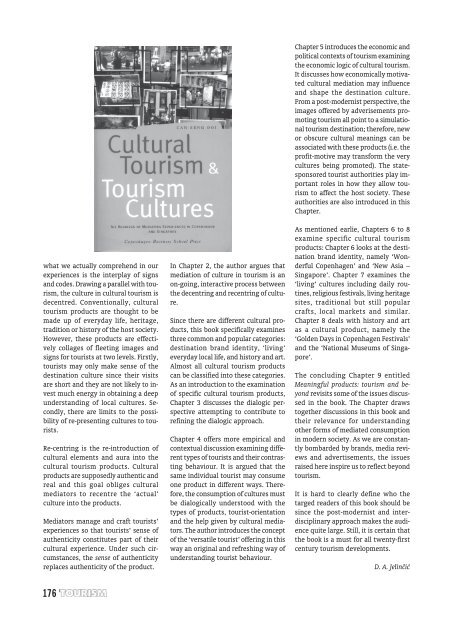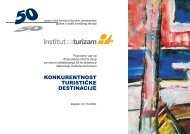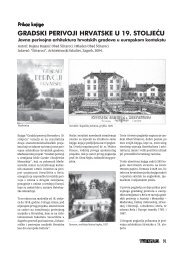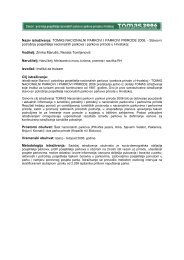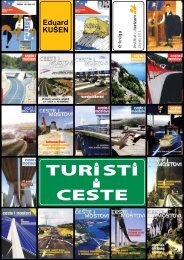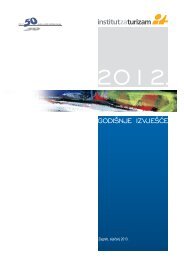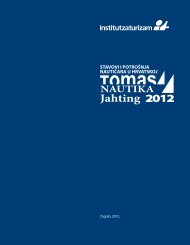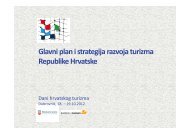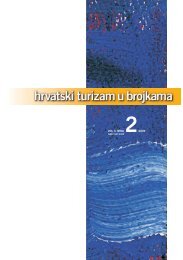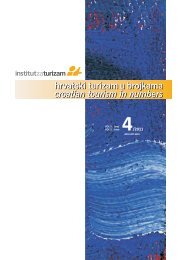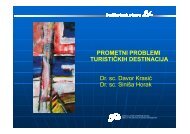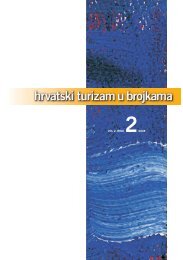CULTURAL TOURISM & TOURISM CULTURES
CULTURAL TOURISM & TOURISM CULTURES
CULTURAL TOURISM & TOURISM CULTURES
You also want an ePaper? Increase the reach of your titles
YUMPU automatically turns print PDFs into web optimized ePapers that Google loves.
what we actually comprehend in ourexperiences is the interplay of signsand codes. Drawing a parallel with tourism,the culture in cultural tourism isdecentred. Conventionally, culturaltourism products are thought to bemade up of everyday life, heritage,tradition or history of the host society.However, these products are effectivelycollages of fleeting images andsigns for tourists at two levels. Firstly,tourists may only make sense of thedestination culture since their visitsare short and they are not likely to investmuch energy in obtaining a deepunderstanding of local cultures. Secondly,there are limits to the possibilityof re-presenting cultures to tourists.Re-centring is the re-introduction ofcultural elements and aura into thecultural tourism products. Culturalproducts are supposedly authentic andreal and this goal obliges culturalmediators to recentre the ‘actual’culture into the products.Mediators manage and craft tourists’experiences so that tourists’ sense ofauthenticity constitutes part of theircultural experience. Under such circumstances,the sense of authenticityreplaces authenticity of the product.In Chapter 2, the author argues thatmediation of culture in tourism is anon-going, interactive process betweenthe decentring and recentring of culture.Since there are different cultural products,this book specifically examinesthree common and popular categories:destination brand identity, ‘living’everyday local life, and history and art.Almost all cultural tourism productscan be classified into these categories.As an introduction to the examinationof specific cultural tourism products,Chapter 3 discusses the dialogic perspectiveattempting to contribute torefining the dialogic approach.Chapter 4 offers more empirical andcontextual discussion examining differenttypes of tourists and their contrastingbehaviour. It is argued that thesame individual tourist may consumeone product in different ways. Therefore,the consumption of cultures mustbe dialogically understood with thetypes of products, tourist-orientationand the help given by cultural mediators.The author introduces the conceptof the ‘versatile tourist’ offering in thisway an original and refreshing way ofunderstanding tourist behaviour.Chapter 5 introduces the economic andpolitical contexts of tourism examiningthe economic logic of cultural tourism.It discusses how economically motivatedcultural mediation may influenceand shape the destination culture.From a post-modernist perspective, theimages offered by adverisements promotingtourism all point to a simulationaltourism destination; therefore, newor obscure cultural meanings can beassociated with these products (i.e. theprofit-motive may transform the verycultures being promoted). The statesponsoredtourist authorities play importantroles in how they allow tourismto affect the host society. Theseauthorities are also introduced in thisChapter.As mentioned earlie, Chapters 6 to 8examine specific cultural tourismproducts: Chapter 6 looks at the destinationbrand identity, namely ‘WonderfulCopenhagen’ and ‘New Asia –Singapore’. Chapter 7 examines the‘living’ cultures including daily routines,religious festivals, living heritagesites, traditional but still popularcrafts, local markets and similar.Chapter 8 deals with history and artas a cultural product, namely the‘Golden Days in Copenhagen Festivals’and the ‘National Museums of Singapore’.The concluding Chapter 9 entitledMeaningful products: tourism and beyondrevisits some of the issues discussedin the book. The Chapter drawstogether discussions in this book andtheir relevance for understandingother forms of mediated consumptionin modern society. As we are constantlybombarded by brands, media reviewsand advertisements, the issuesraised here inspire us to reflect beyondtourism.It is hard to clearly define who thetarged readers of this book should besince the post-modernist and interdisciplinaryapproach makes the audiencequite large. Still, it is certain thatthe book is a must for all twenty-firstcentury tourism developments.D. A. Jelinčić176


